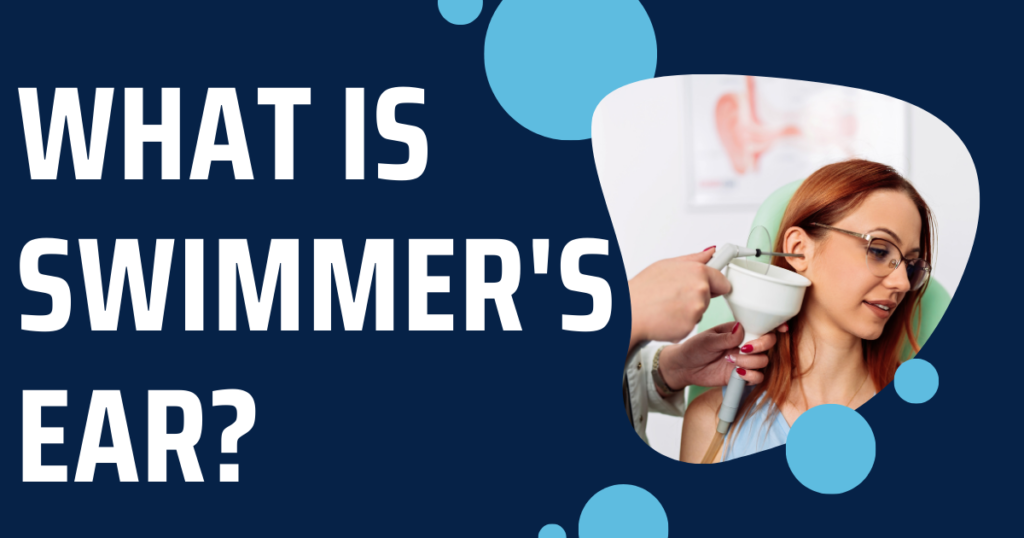Swimmer’s ear is a common but often misunderstood condition that affects millions of people each year. Officially known as otitis externa, it is an outer ear infection that typically occurs when water remains trapped in the ear canal after swimming, bathing, or even exposure to humid environments. The trapped moisture creates a perfect breeding ground for bacteria, leading to irritation and inflammation.
Understanding what swimmer’s ear is, why it happens, and how to prevent and treat it is crucial for those who frequently engage in water-related activities. Without proper treatment, this infection can become severe, leading to further complications and discomfort. In this blog, we’ll delve into the causes, symptoms, treatments, and prevention strategies for swimmer’s ear, helping you stay informed and protect your ears.
Causes of Swimmer’s Ear
Swimmer’s ear is most commonly caused by prolonged exposure to moisture. When water stays in the ear canal, it disrupts the natural protective barrier of earwax, allowing bacteria or fungi to penetrate the skin inside the ear. However, swimmer’s ear isn’t exclusive to swimmers. The condition can develop from any situation that introduces moisture into the ear, such as excessive sweating or even spending too much time in humid environments.
Furthermore, damage to the ear canal from scratching or inserting objects can create small openings where bacteria can thrive, leading to infection.
Symptoms of Swimmer’s Ear
The symptoms of swimmer’s ear can range from mild to severe, depending on how advanced the infection is. In its early stages, the condition often presents as itching inside the ear canal. This is usually accompanied by mild discomfort that may worsen when the ear is touched or pulled.
As the infection progresses, the symptoms can intensify. These may include redness inside the ear, a feeling of fullness, and increased pain. In some cases, fluid drainage occurs, which can be either clear or pus-like. Advanced cases can cause fever, swelling in the lymph nodes near the ear, and hearing loss.
It’s essential to recognize the signs of swimmer’s ear early to prevent the infection from worsening. Prompt treatment can alleviate discomfort and prevent further complications, such as the spread of infection to surrounding tissues.
Treatment for Swimmer’s Ear
Treating swimmer’s ear often requires a visit to a healthcare provider. The most common treatment involves prescription ear drops that contain antibiotics to combat the infection. These drops may also include a corticosteroid to reduce inflammation and relieve pain. If the ear canal is swollen, a doctor may insert a wick to help the drops reach deeper into the canal.
In addition to ear drops, over-the-counter pain relievers like ibuprofen or acetaminophen can help manage discomfort. In some cases, if the infection is fungal, antifungal ear drops will be prescribed instead of antibiotics.
During treatment, it is crucial to keep the ear dry. Avoid swimming, bathing, or any activity that could introduce more moisture into the ear until the infection has cleared. Following the doctor’s instructions and completing the entire course of treatment ensures that the infection does not return.
Preventing Swimmer’s Ear
Prevention is key when it comes to swimmer’s ear. One of the most effective ways to prevent the condition is by keeping the ears dry. After swimming or showering, tilt your head to each side to allow water to drain from the ear canal. Using a soft towel to dry the outer ear can also help. Some people use earplugs or swimming caps to keep water out of their ears during activities in the water.
In addition, avoid inserting objects like cotton swabs, pencils, or hairpins into the ears, as these can damage the skin and make the ear more susceptible to infection. Keeping your ear canals healthy by allowing earwax to protect and moisturize the area is essential.
For those who are prone to swimmer’s ear, using a preventive ear drop solution after exposure to water can help reduce the risk of infection. These solutions typically contain a mixture of rubbing alcohol and white vinegar, which work to dry out the ear canal and restore its natural pH balance.
When to See a Doctor
While mild cases of swimmer’s ear can sometimes resolve on their own, it is important to consult a healthcare professional if symptoms persist or worsen. Prolonged pain, severe discomfort, or discharge from the ear are signs that the infection requires medical attention.
In rare cases, untreated swimmer’s ear can lead to more severe infections, such as malignant otitis externa, a condition that can affect the bones and cartilage surrounding the ear canal. This is more likely to occur in people with weakened immune systems or those with diabetes.
Seeking prompt treatment not only ensures relief from symptoms but also helps prevent serious complications.
Swimmer’s ear is a preventable and treatable condition that affects many people, especially those who spend time in water. By understanding what swimmer’s ear is, recognizing its symptoms, and taking steps to prevent and treat it, you can reduce your risk of infection and maintain healthy ears. Keeping your ears dry, avoiding ear canal irritation, and seeking medical attention when necessary are all crucial elements of ear care.
For anyone who experiences recurrent ear infections, talking to a healthcare provider about preventive measures is essential. Taking care of your ears now can help prevent discomfort and protect your hearing in the long term.



